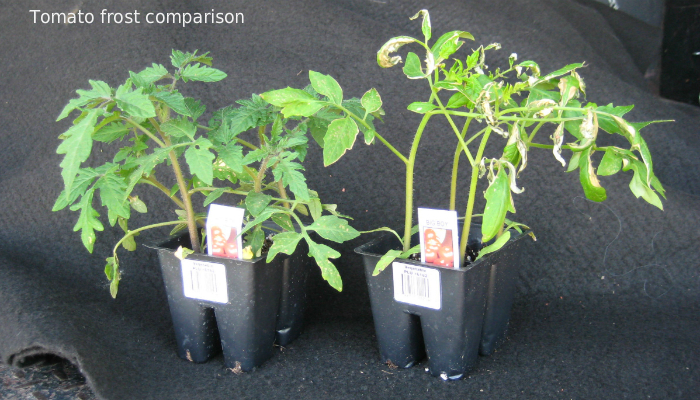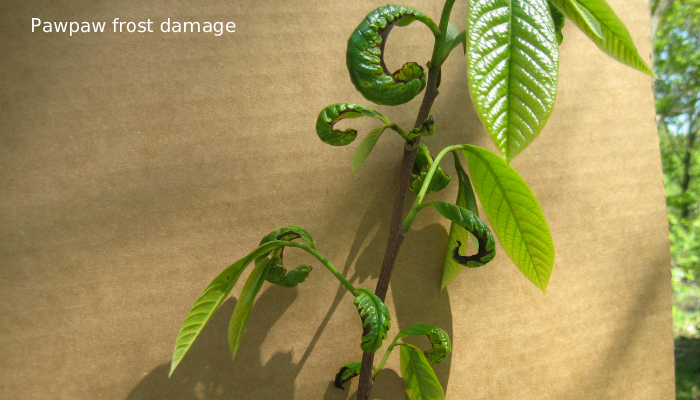Radiation Frost: Another Dimension of Microclimate

This year our late April-early May weather was quite normal, leaving gardeners and farmers alike wondering whether they had actually seen the last frost, or perhaps there might be more coming. We alternated between southern air, which was hazy, humid, and warm; and northern air, which was clear, dry, and cool. The northern air gave us overnight lows in the mid to high 30’s which can set the stage for “radiation frost,” even though the air never dipped to 32֯.
The way radiation frost works is that on a clear night outdoors, we are looking up mostly at outer space, which is extremely cold. Earthly surfaces, like leaves, which are exposed to the sky, are quite warm in comparison and begin radiating their heat into the cold sky. If the air between sky and leaf is dry, clear, and there is no wind, the leaf can lose heat to the sky faster than it can be absorbed from the surrounding air. Under these conditions the leaf surface can cool to 32֯ or less even though the air is still 36֯ or 37,֯ and what would have been dew on the leaf instead freezes to ice, sometimes called “radiation frost.”
Because this frost doesn’t begin to form until the middle of the night and disappears soon after sunrise, it only lasts a few hours and so is rarely a killing frost. However, it can cause leaf damage, especially recognizable as leaf edges turning brown and crinkly, and looking rather like herbicide damage. In Iowa, this gets tricky to determine because our spring air also does carry a load of herbicides. Young oak leaves are especially vulnerable to herbicide drift and the damage remains noticeable later in the season, referred to as “oak tatters.”
Microclimate comes into play here because our north sky stays colder longer each night than other sky directions. So a north-facing hillslope will lose more heat and get more frosted than an otherwise matching south-facing slope. For native plant species near the northern limits of their range, like pawpaw and spicebush, losing or not losing part of their new leaves can be the deciding factor on whether or not they thrive. By contrast, our natives with ranges that extend into Wisconsin and Minnesota (for example, most willows, maples, and woodland wildflowers) shrug off this microclimate effect, suffer no leaf damage, and are already well underway with flowering and fruit.
The effects of radiation heat loss can be so regular that in an arid climate with clear skies, the heat loss to the night sky can be used to run a refrigerator. This type of device is basically a solar collector running in reverse. A black flat-plate panel faces the north night sky and radiates its heat away. This heat is supplied by circulating fluid, which it extracts from the insulated box – keeping your beer cool.
In the above photo, the 4-pack of tomato seedlings on the right was left out on a little table in a microclimate which provided an uninhibited view of the North Star for at least six clear nights in late April-early May, above 32֯. Those on the left were on a matching table, the same nights, but located where their view of the north sky was blocked by our house, and the south sky was partially screened by many slender bare tree branches. The radiation frost damage to the north-facing plants is evident. The outer leaves on the young pawpaw shown were also frost-damaged and are being replaced by new leaves, at some expense to the tree.

These frost effects are important to keep in mind when choosing your plants and where you place them – choose wisely. For other dimensions of our microclimates, see my earlier blogs: Microclimates are Important to Planting in Southeast Iowa, Microclimates II: How do They Affect Animals, and Microclimates III: How to Recognize them in the Field.


